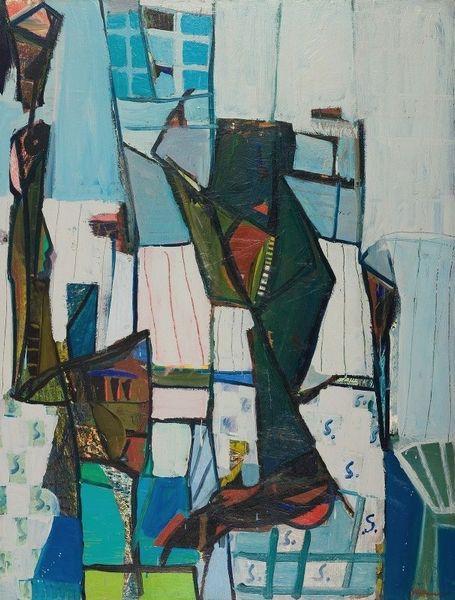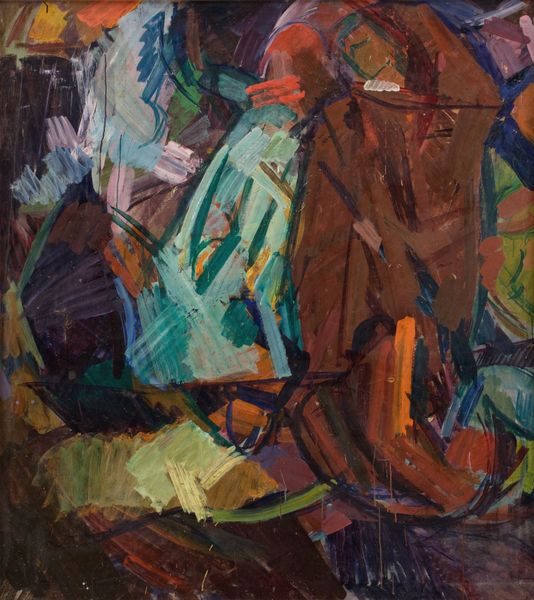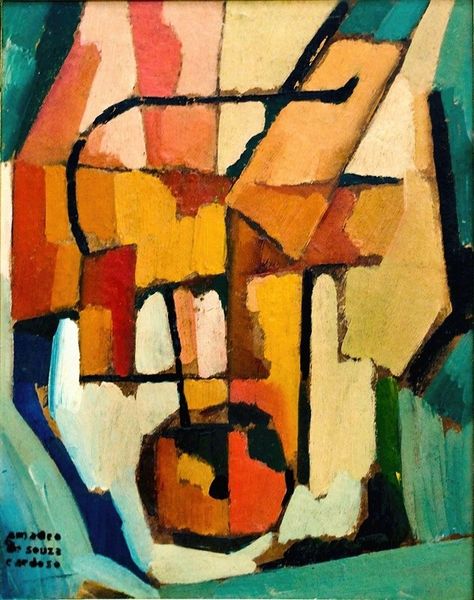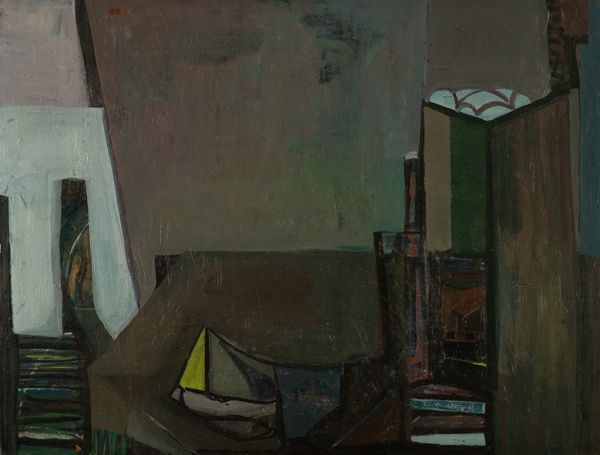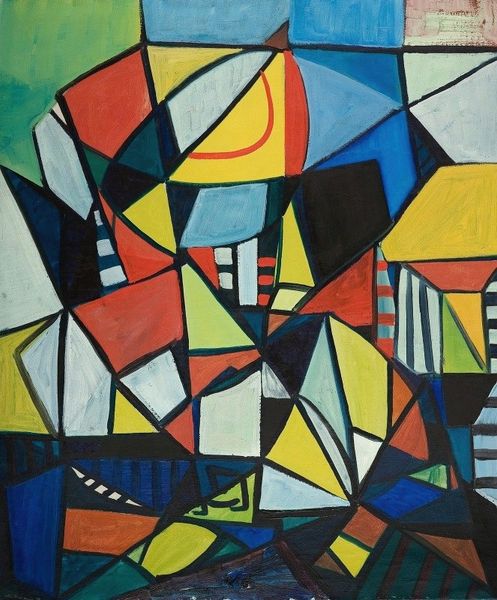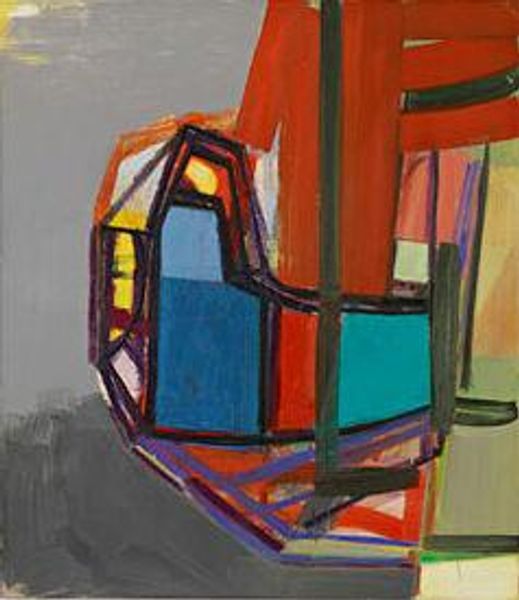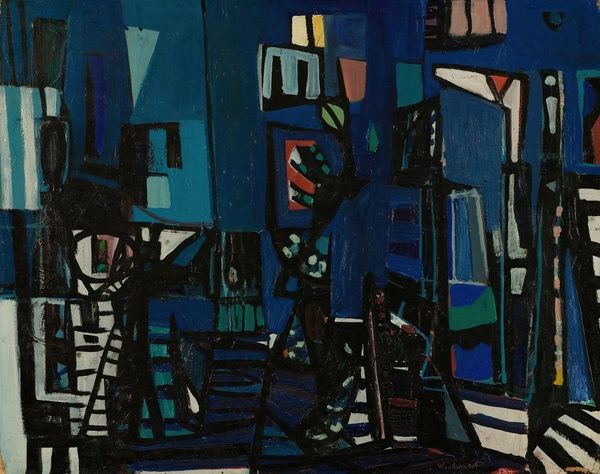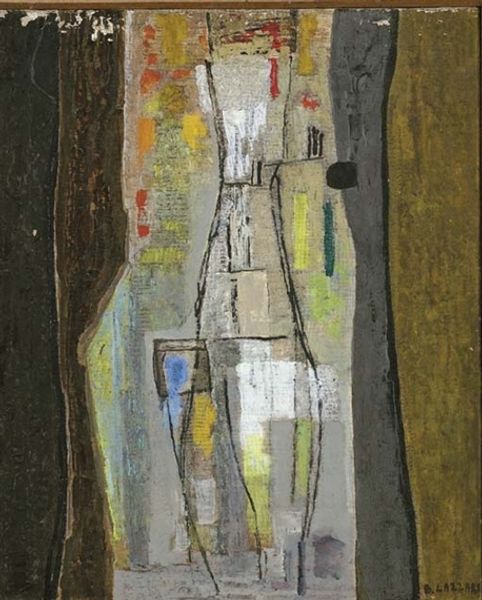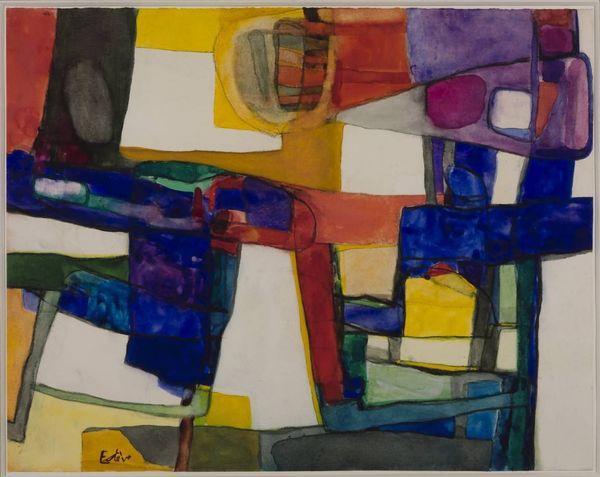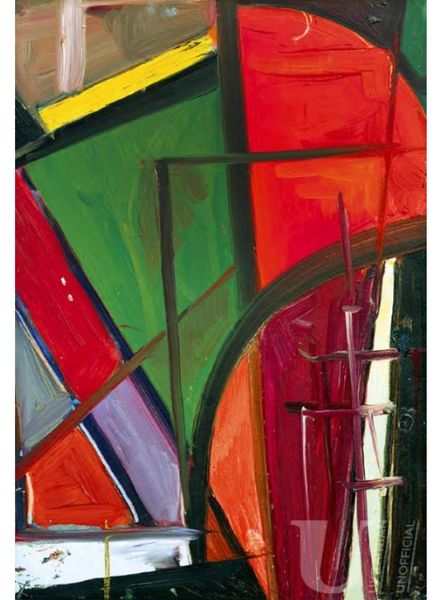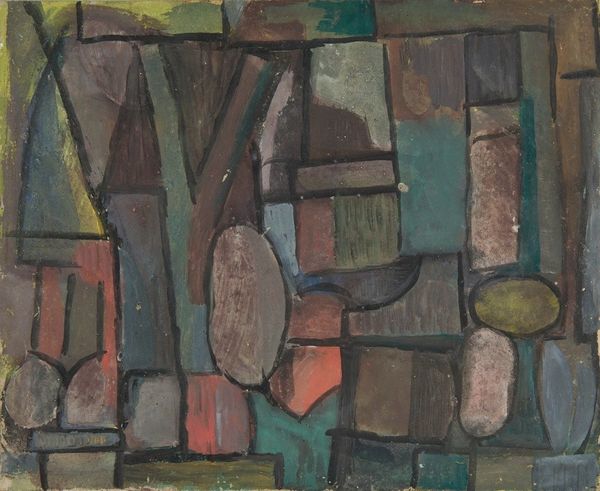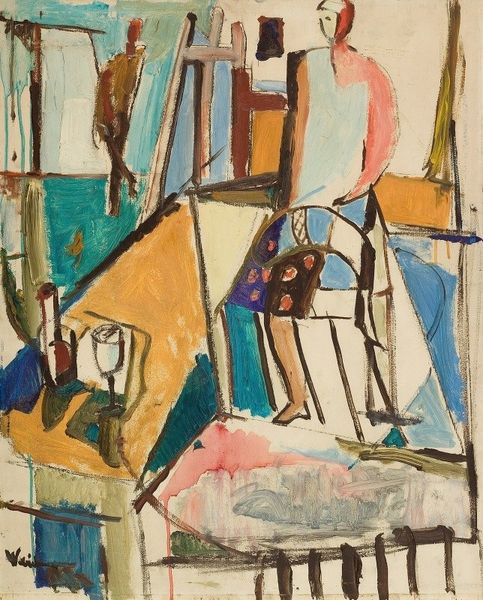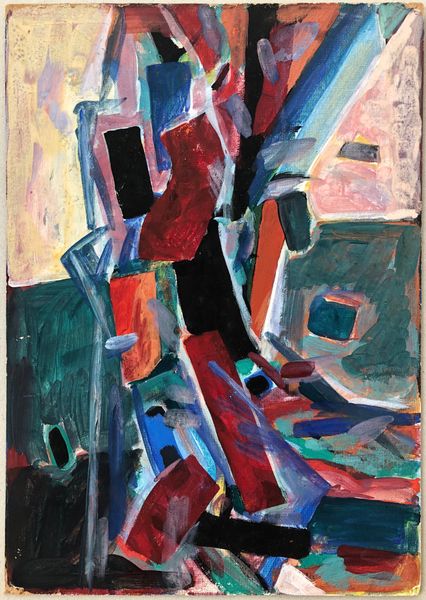
painting, oil-paint
#
abstract-expressionism
#
abstract painting
#
painting
#
oil-paint
#
figuration
#
abstraction
#
painting art
#
modernism
Copyright: Public Domain: Artvee
Curator: Looking at "Stålarbeideren," or "The Steelworker," painted in 1948 by Jakob Weidemann, I immediately see a fascinating study of symbolic figuration rendered through the visual language of abstraction. Editor: My first thought is how the geometric composition gives off an intense sense of enclosure. It feels heavy, like being trapped in machinery. There is a brooding quality to the colours that emphasizes the figure's isolation. Curator: I agree; the artist captures something elemental about the worker's identity, presenting his figure as a patchwork of shapes: brown for labour, perhaps the hints of blue for thought, all held together by assertive black lines. Editor: Absolutely, the severe angles mirror the brutal reality of industrial labour. You get a real sense of the steelworker becoming almost part of the machinery itself, losing individual definition in the grid-like structures of his surroundings. Is this, perhaps, an indication of some loss of self and of meaning? Curator: Undoubtedly, the abstraction distances us, yes, but I see an archetypal figure—a symbol, not a portrait. I see a timeless representation of industrial labor more than a specific individual’s story. Editor: Yes, but in the socio-political landscape of postwar Europe, after the traumas and dehumanization, any depiction of the working class carries with it a weight. The figure, while not identifiable as a particular person, bears witness to an era marked by physical demands on those who sustained it. Curator: And it's that tension, that combination of modern visual strategies married with social commentary, that holds our attention. I agree—it resonates beyond a simple depiction of work. It is the feeling and symbolic power it has of a type of working person from this time in history. Editor: Indeed, art becomes a vehicle for acknowledging unseen labour—the sacrifices people make—and transforms them into collective memory. The piece demands a continuous revisiting and assessment of how labor shapes identity and dictates life experiences. Curator: Exactly, the longer I spend with it, the richer its network of signs becomes. Editor: Me too, now seeing it less as cold geometry, and more as a deeply considered commentary about post-war societal anxieties.
Comments
No comments
Be the first to comment and join the conversation on the ultimate creative platform.
